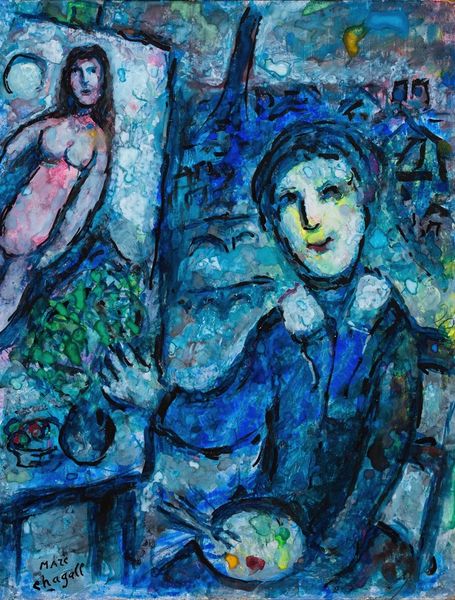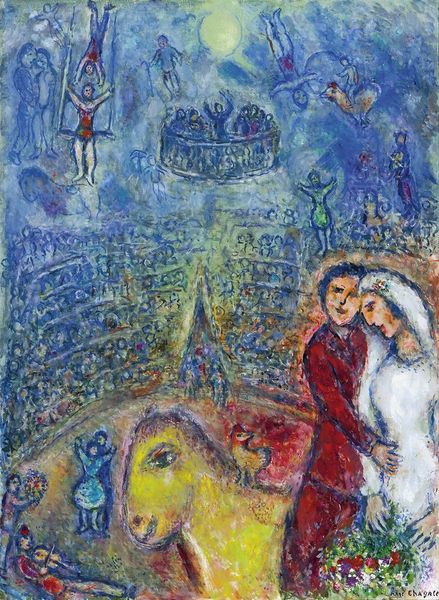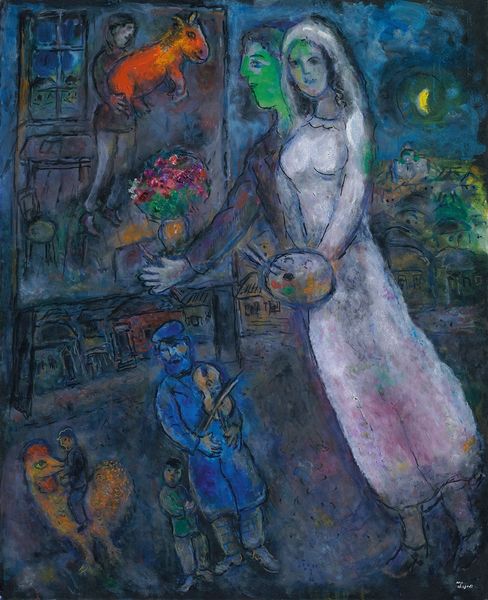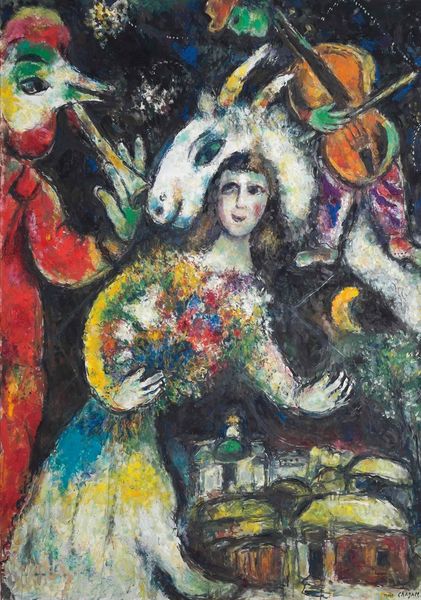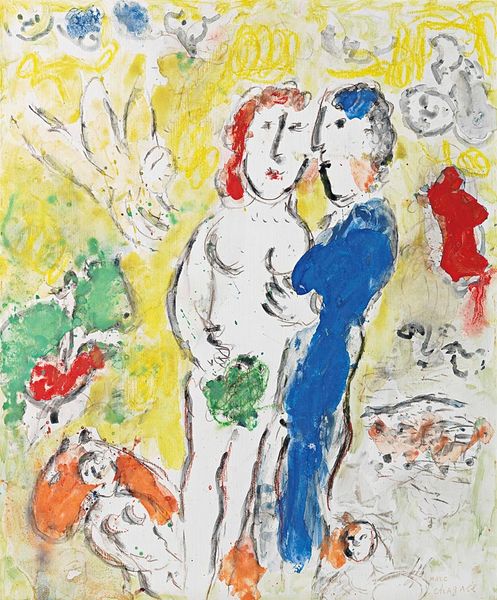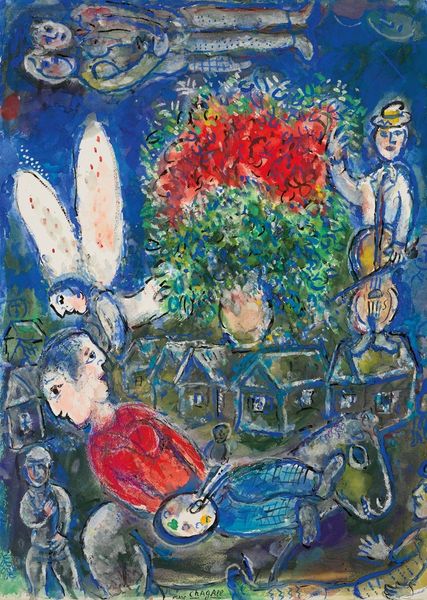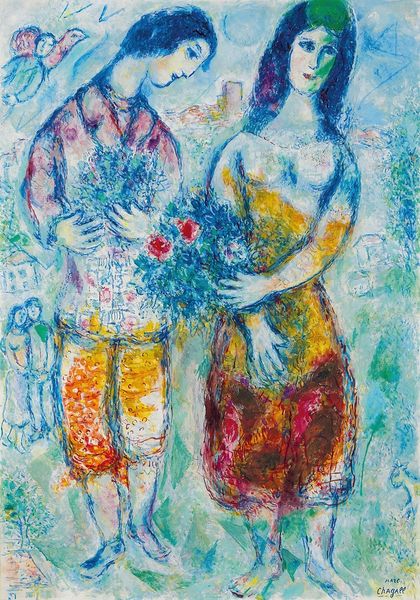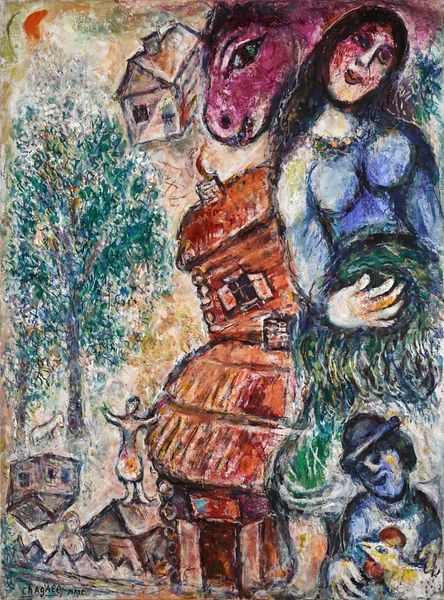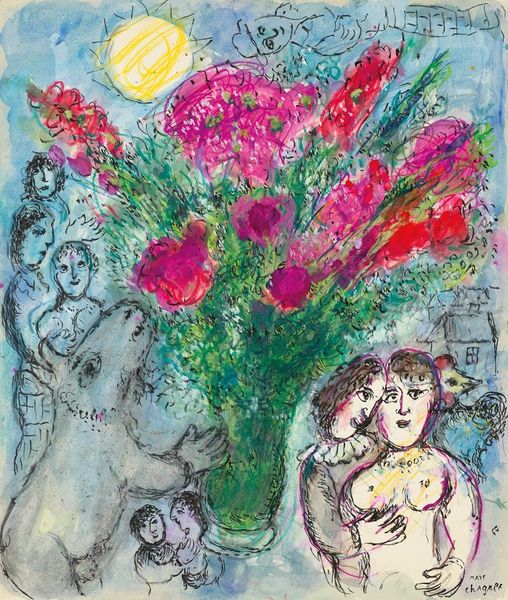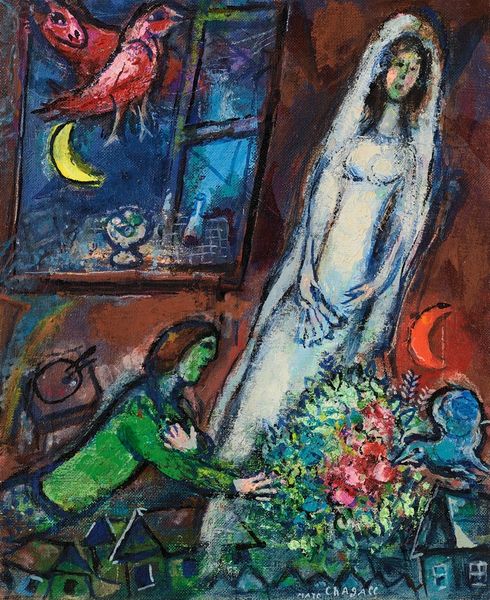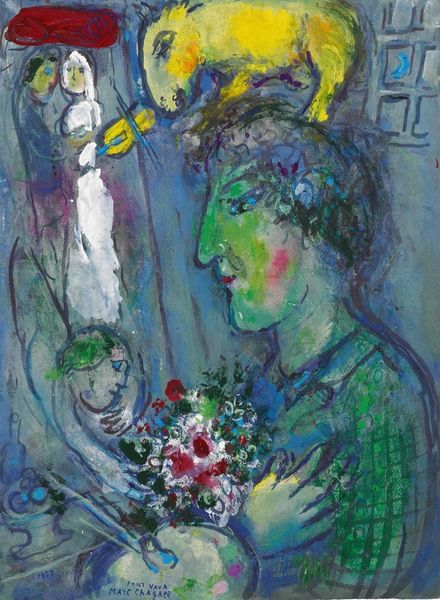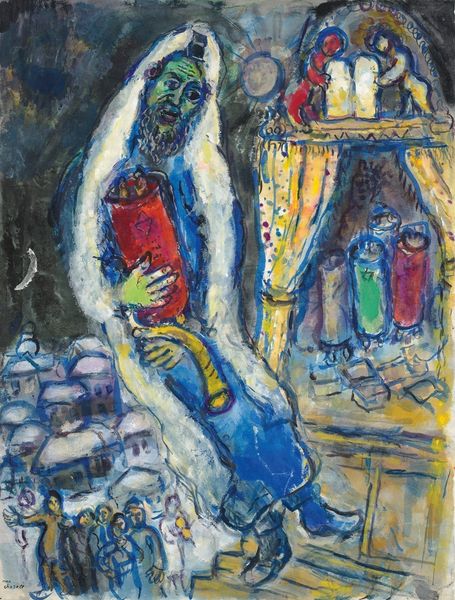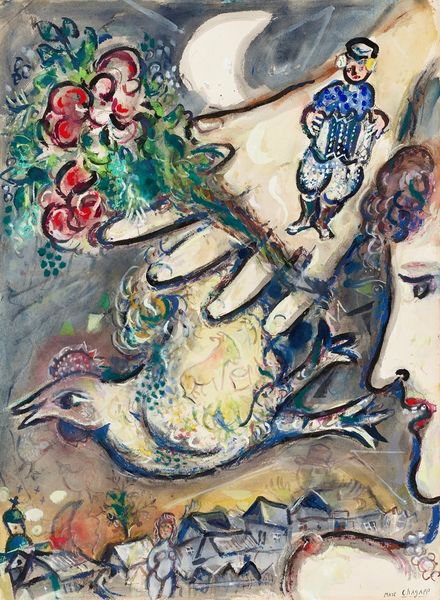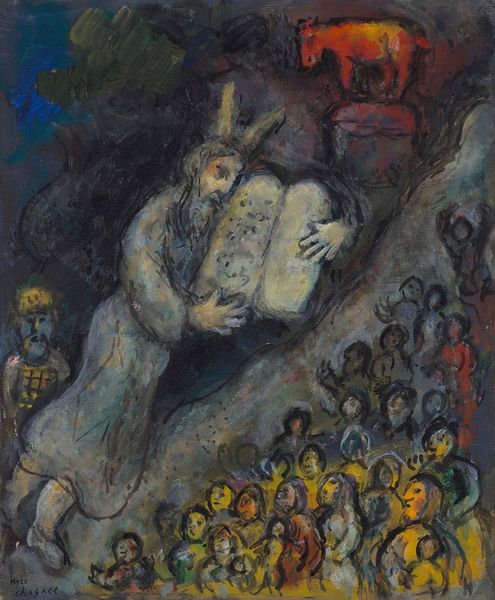
Copyright: Modern Artists: Artvee
Curator: This is Marc Chagall's "Couple au double-profil," created in 1980. It's executed in gouache, a medium that really lends itself to Chagall's signature vibrant palette. Editor: My first impression is of dreamlike unease, despite the bright colours. There's a spectral quality and also some gender questioning happening. It definitely draws me in! Curator: Gouache allows for rich, opaque colour, and you can really see how Chagall builds up the layers. Considering he was in his 90s when he made this, there's remarkable energy in the application of paint, don't you think? Notice also that much of the medium feels almost raw, with an interesting rough texture that is not very common with this particular process. Editor: Absolutely! Thinking about the double profile—is it about duality, perhaps reflecting on different facets of identity? The horse-headed figure also intrigues me—it destabilizes the representation of women. Does this allude to the role of women in the society he depicted? The city behind looks a little crushed; his view feels a little depressing to be frank, despite its expressionistic naivete. Curator: Well, think about the availability of materials for an established artist like Chagall by the 1980s. Gouache, widely available and relatively inexpensive, allowed him to continue exploring these recurring themes of love and memory without constraints on production. His artistic output even this late in life reflects the socio-economic conditions that have defined modern artistic practices, especially in comparison to older practices where artists had more ties with patronage. Editor: Yes, I see that. And positioning the work within its socio-historical moment--post-war anxiety, the Cold War era. I'd go further to say that it brings forward important issues such as the status of immigrants or the impact of industrialization on society, given that the expressionistic component adds more of a gloomy sensation. Curator: His body of work truly showcases how material access and historical factors shaped an artist's ability to communicate his vision. It shows what's possible given available mediums and production strategies, for him that meant constant expression and a strong link to personal imagery until the very end of his life. Editor: It is true, Chagall still speaks of the burdens of history but with that trademark exuberance that gives even his darkest paintings a glimmer of hope and celebration. This artwork makes for such a fertile conversation to behold, that makes one desire to return to it many times.
Comments
No comments
Be the first to comment and join the conversation on the ultimate creative platform.
